#ProductOwner
Your 2025 Definitive Guide to Top Agile Books
31 January 2025
By Scott M. Graffius


Introduction
In today's fast-paced world, agility rules. Master it, and you'll thrive. This list of the top 10 agile books covers everything from Scrum and Kanban to leadership and innovation. Whether you're an experienced professional or just starting, these books will deepen your understanding, sharpen your skills, and unlock new potential.
Scott M. Graffius—in collaboration with others—curated this list. For that reason and to keep things fair, Graffius’ award-winning Agile Scrum: Your Quick Start Guide with Step-by-Step Instructions is not included.

Top Agile Books
Ready to accelerate your success? Dive into the list, organized alphabetically by title.


Agile Estimating and Planning by Mike Cohn
Agile Estimating and Planning by Mike Cohn is a must-read for agile project management. It advocates relative estimation methods like story points over time-based approaches for greater accuracy and adaptability. Covering velocity tracking, iteration, and release planning, it aligns sprints with business goals while preserving agility. Cohn highlights the team-driven nature of agile estimation, refining it continuously to improve decision-making. This approach enhances planning precision, empowers teams, and drives project success. Transform your agile practices—order your copy today!
Click here to see the price on Amazon
Additional details:
• Kindle (ASIN: B004X1D3TC)
• Paperback (ISBN-13: 978-0131479418)

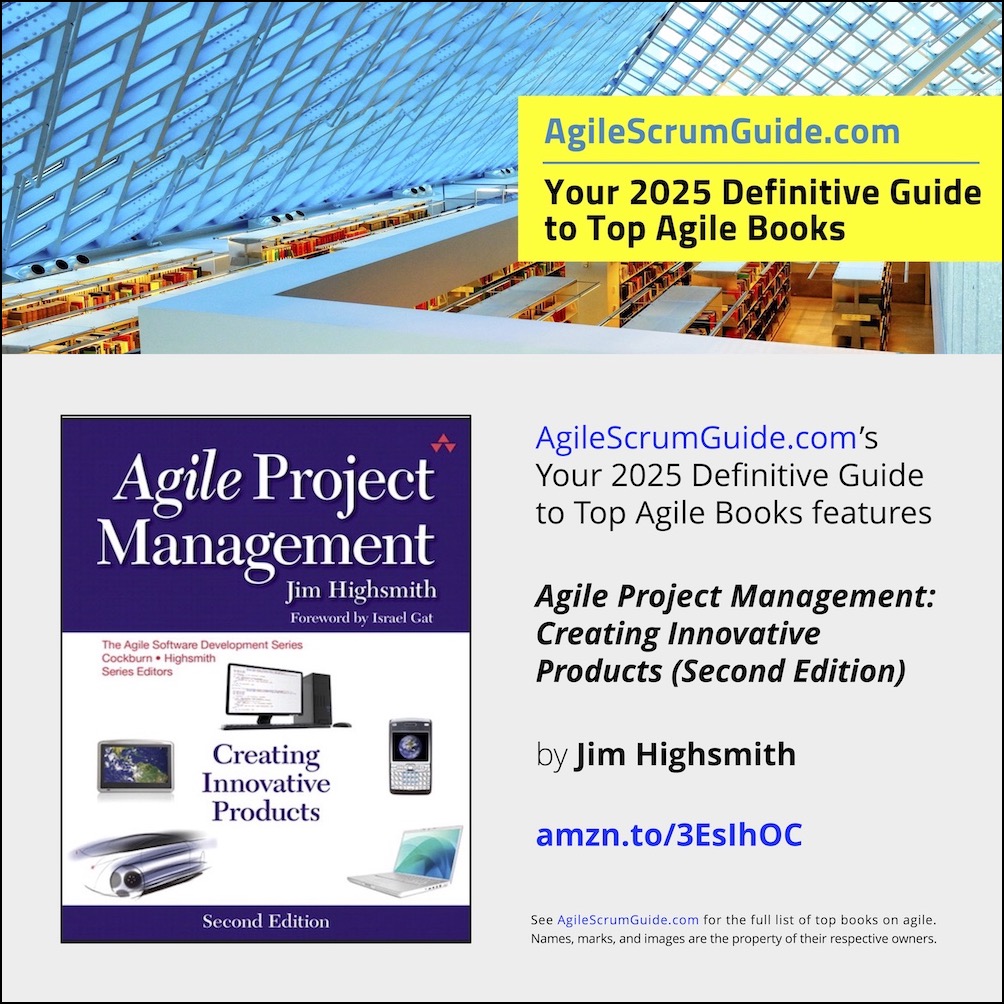
Agile Project Management: Creating Innovative Products (Second Edition) by Jim Highsmith
Agile Project Management: Creating Innovative Products (Second Edition) by Jim Highsmith offers a strategic, adaptive approach to managing projects in fast-changing environments. It defines agility as a mindset balancing flexibility with discipline, enabling teams to navigate uncertainty while delivering value. Blending agile and traditional methods, it introduces the Agile Project Management (APM) model, emphasizing continuous delivery, customer collaboration, and iterative planning. Highsmith prioritizes leadership over rigid processes, advocating decentralized decision-making and innovation. This book equips professionals with the tools to drive agility at both tactical and organizational levels.
Click here to see the price on Amazon
Additional details:
• Kindle (ASIN: B002HMJYAG)
• Paperback (ISBN-13: 978-0321658395)


Agile Retrospectives: A Practical Guide for Catalyzing Team Learning and Improvement (Second Edition) by Esther Derby, Diana Larsen, and David Horowitz
Agile Retrospectives: A Practical Guide for Catalyzing Team Learning and Improvement (Second Edition) by Esther Derby, Diana Larsen, and David Horowitz provides expert guidance on running effective retrospectives. This updated edition adds 120 pages of new insights, incorporating recent research and real-world experience. Emphasizing psychological safety, it offers practical techniques and strategies, including solutions for remote and hybrid teams. By applying these approaches, teams can drive continuous improvement, boost satisfaction, and deliver greater customer value.
Click here to see the price on Amazon
Additional details:
• Kindle (ASIN: B0D6XFL73D)
• Paperback (ISBN-13: 979-8888650370)

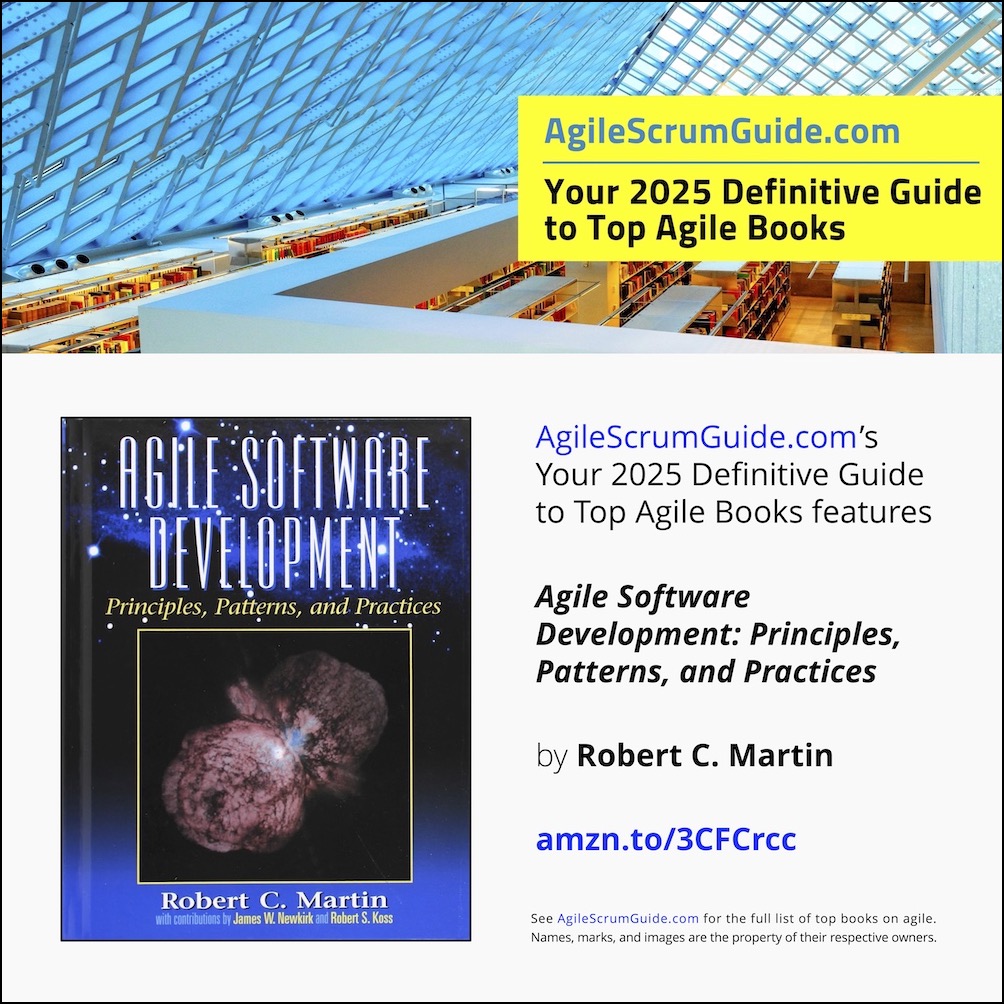
Agile Software Development: Principles, Patterns, and Practices by Robert C. Martin
Agile Software Development: Principles, Patterns, and Practices by Robert C. Martin explores agile methodologies, object-oriented design, and design patterns. It stresses solid design principles for maintainable, scalable software. With detailed discussions and code examples in C++ and Java, Martin demonstrates real-world applications. The book also covers UML and Extreme Programming (XP), offering a comprehensive view of modern development. Agile Software Development is a must-read for those looking to improve their design and coding practices.
Click here to see the price on Amazon
Additional details:
• Hardcover (ISBN-13: 978-0135974445)


Clean Agile: Back to Basics by Robert C. Martin
In Clean Agile: Back to Basics, renowned software engineer Robert C. Martin revisits the foundational principles of agile development—emphasizing the importance of simplicity, communication, and feedback. Martin argues that many organizations have strayed from agile's core values, focusing too heavily on processes and tools rather than individuals and interactions. He advocates for a return to the essence of agile, highlighting essential practices such as test-driven development (TDD), refactoring, and continuous integration to produce high-quality software. This book is a valuable guide for both newcomers and seasoned professionals seeking to realign their development practices with true agile principles.
Click here to see the price on Amazon
Additional details:
• Kindle (ASIN: B07XTL99JQ)
• Audiobook (ASIN: B08X7FWCZM)
• Paperback (ISBN-13: 978-0135781869)


Coaching Agile Teams: A Companion for Scrum Masters, Agile Coaches, and Project Managers in Transition by Lyssa Adkins
Coaching Agile Teams: A Companion for Scrum Masters, Agile Coaches, and Project Managers in Transition by Lyssa Adkins provides essential guidance for scrum masters and agile coaches. It highlights team dynamics, collaboration, and empowerment while navigating agile complexities. Adkins offers practical coaching strategies, urging continuous learning and growth. This book equips readers to build high-performing teams and drive lasting success in agile environments.
Click here to see the price on Amazon
Additional details:
• Kindle (ASIN: B003QP47YG)
• Audiobook (ASIN: B08QTX31HV)
• Paperback (ISBN-13: 978-0321637703)


Drive: The Surprising Truth About What Motivates Us by Daniel H. Pink
In Drive: The Surprising Truth About What Motivates Us, Daniel H. Pink challenges traditional beliefs about motivation, presenting a compelling case for the power of intrinsic motivators over external rewards. Drawing on four decades of scientific research, Pink identifies three core elements that drive human motivation: autonomy, the desire to direct our own lives; mastery, the urge to improve and excel in meaningful tasks; and purpose, the yearning to contribute to something greater than ourselves. He argues that the conventional "carrot-and-stick" approach is often ineffective, especially for tasks requiring creativity and critical thinking, and that fostering an environment that supports these intrinsic drives leads to higher performance and personal satisfaction. This insightful book offers practical guidance for individuals and organizations aiming to harness true motivation. Discover the transformative insights in Drive and unlock your full potential. Over two million copies sold worldwide — order yours today!
Click here to see the price on Amazon
Additional details:
• Kindle (ASIN: B004P1JDJO)
• Audiobook (ASIN: B0032COUMC)
• Hardcover (ISBN-13: 978-1594488849)
• Paperback (ISBN-13: 978-9123682348)

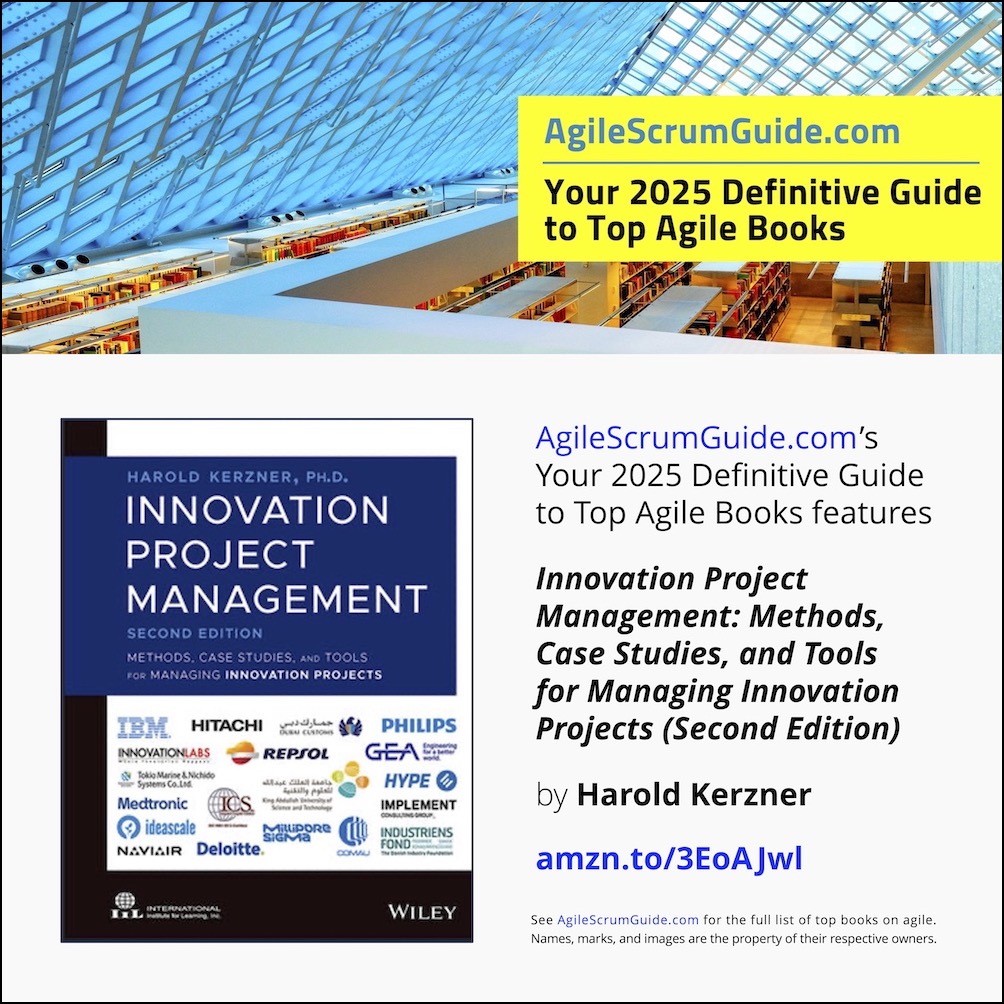
Innovation Project Management: Methods, Case Studies, and Tools for Managing Innovation Projects (Second Edition) by Harold Kerzner
Harold Kerzner's Innovation Project Management: Methods, Case Studies, and Tools for Managing Innovation Projects (Second Edition) provides a powerful roadmap for managing innovation projects with precision and impact. Traditional project management methods often fall short when faced with the uncertainty and fluidity of innovation. This book takes a different approach, offering professionals practical tools, processes, and metrics tailored to address the unique challenges of innovation-driven initiatives. Through case studies from world-class organizations—like IBM, Lego, and Deloitte—the author illustrates how successful companies navigate the complexities of incremental and radical innovation, safeguard intellectual property, and align project management with value creation. In the Agile Innovation section, Kerzner incorporates content from the award-winning Agile Scrum: Your Quick Start Guide with Step-by-Step Instructions by Scott M. Graffius. Get Innovation Project Management for actionable tools, processes, metrics, and insights from world-class organizations to master innovation; and elevate your project management skills today!
Click here to see the price on Amazon
Additional details:
• Kindle (ASIN: B0BN4SQCW5)
• Hardcover (ISBN-13: 978-1119931249)


Lean Software Development: An Agile Toolkit by Mary Poppendieck and Tom Poppendieck
Lean Software Development: An Agile Toolkit by Mary Poppendieck and Tom Poppendieck adapts lean manufacturing principles for software development. It provides a framework to deliver high-quality products faster and more efficiently. The book covers seven core lean principles—eliminating waste, amplifying learning, delaying decisions, delivering quickly, empowering teams, building integrity, and seeing the whole—to streamline development and maximize value. With 22 actionable tools, the book provides strategies for improving collaboration, navigating uncertainty, and driving continuous improvement. Ideal for overcoming inefficiencies and slow delivery, Lean Software Development is a go-to resource for building better, faster, and more adaptable software.
Click here to see the price on Amazon
Additional details:
• Kindle (ASIN: B00HEL13HW)
• Paperback (ISBN-13: 978-0321150783)

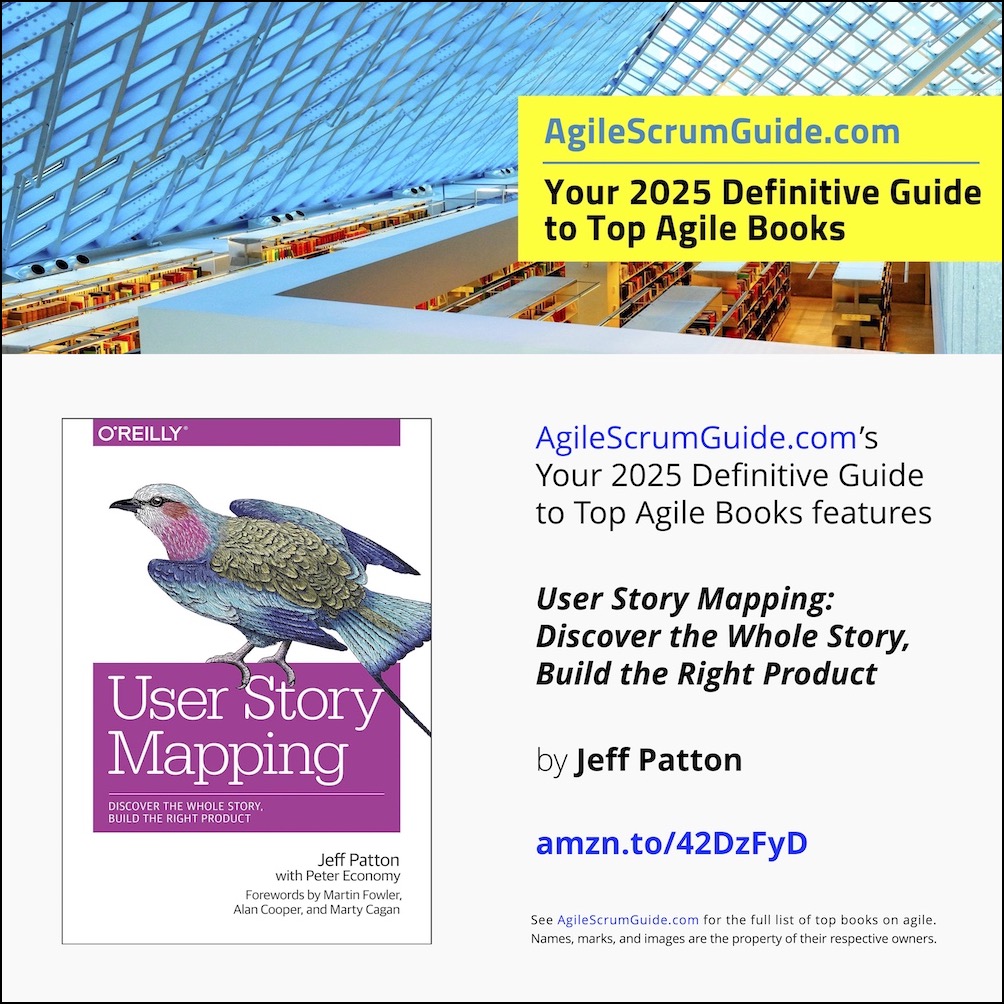
User Story Mapping: Discover the Whole Story, Build the Right Product by Jeff Patton
User Story Mapping: Discover the Whole Story, Build the Right Product by Jeff Patton is an essential guide to understanding the user story mapping technique, which helps teams break down complex products into manageable tasks. The book illustrates how this method allows for better communication between stakeholders, improved product discovery, and an overall more effective approach to building software. Patton offers practical advice on creating shared understanding and prioritizing work. User Story Mapping is a must-have for anyone looking to build products that truly meet user needs and deliver successful outcomes.
Click here to see the price on Amazon
Additional details:
• Kindle (ASIN: B00NF07FHS)
• Audiobook (ASIN: B08TZGKKF2)
• Paperback (ISBN-13: 978-1491904909)
• Audio CD (ISBN-13: 979-8212930895)

Conclusion
Agile mastery is a journey, and the right knowledge can make all the difference. Get these books, apply their insights, and take your skills to the next level—because learning and adapting is the best way to thrive.

Read on for:

About Scott M. Graffius

Scott M. Graffius is a high impact and globally recognized AI, advanced technology, agile, and project management researcher, thought leader, author, and public speaker.
Graffius has generated more than USD $1.9 billion in business value for organizations served, including Fortune 500 companies. Businesses and industries range from technology (including R&D and AI) to entertainment, financial services, and healthcare, government, social media, and more.
Graffius leads the professional services firm Exceptional PPM and PMO Solutions, along with its subsidiary Exceptional Agility. These consultancies offer strategic and tactical advisory, training, embedded talent, and consulting services to public, private, and government sectors. They help organizations enhance their capabilities and results in agile, project management, program management, portfolio management, and PMO leadership, supporting innovation and driving competitive advantage. The consultancies confidently back services with a Delighted Client Guarantee™. Graffius is a former vice president of project management with a publicly traded provider of diverse consumer products and services over the Internet. Before that, he ran and supervised the delivery of projects and programs in public and private organizations with businesses ranging from e-commerce to advanced technology products and services, retail, manufacturing, entertainment, and more. He has experience with consumer, business, reseller, government, and international markets.
He is the author of two award-winning books.
Organizations around the world invite Graffius to speak on tech (including AI), agile, project management, program management, portfolio management, and PMO leadership. He has developed and delivered unique and compelling talks and workshops. To date, Graffius has delivered 91 sessions across 25 countries. Select examples of events include Agile Trends Gov, BSides (Newcastle Upon Tyne), Conf42 Quantum Computing, DevDays Europe, DevOps Institute, DevOpsDays (Geneva), Frug’Agile, IEEE, Microsoft, Scottish Summit, Scrum Alliance RSG (Nepal), Techstars, and W Love Games International Video Game Development Conference (Helsinki), and more. With an average rating of 4.81 (on a scale of 1-5), sessions are highly valued.
For booking inquiries, complete the speaker engagement request form or email directly to explore how Graffius can help elevate your organization’s performance.
Prominent businesses, professional associations, government agencies, and universities have featured Graffius and his work including content from his books, talks, workshops, and more. Select examples include:
Graffius has been actively involved with the Project Management Institute (PMI) in the development of professional standards. He was a member of the team which produced the Practice Standard for Work Breakdown Structures—Second Edition. Graffius was a contributor and reviewer of A Guide to the Project Management Body of Knowledge—Sixth Edition, The Standard for Program Management—Fourth Edition, and The Practice Standard for Project Estimating—Second Edition. He was also a subject matter expert reviewer of content for the PMI’s Congress. Beyond the PMI, Graffius also served as a member of the review team for two of the Scrum Alliance’s Global Scrum Gatherings.
Graffius has a bachelor’s degree in psychology with a focus in Human Factors. He holds nine professional certifications:
He is an active member of the Scrum Alliance, the Project Management Institute (PMI), and the Institute of Electrical and Electronics Engineers (IEEE).
He divides his time between Los Angeles and Paris, France.
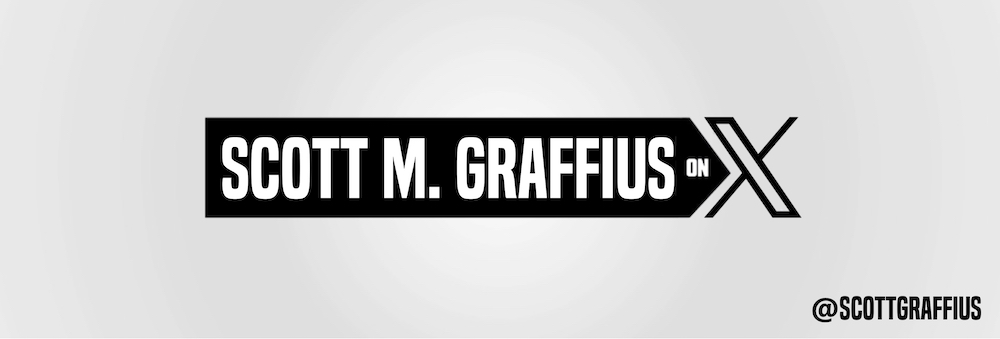

About Agile Scrum: Your Quick Start Guide with Step-by-Step Instructions
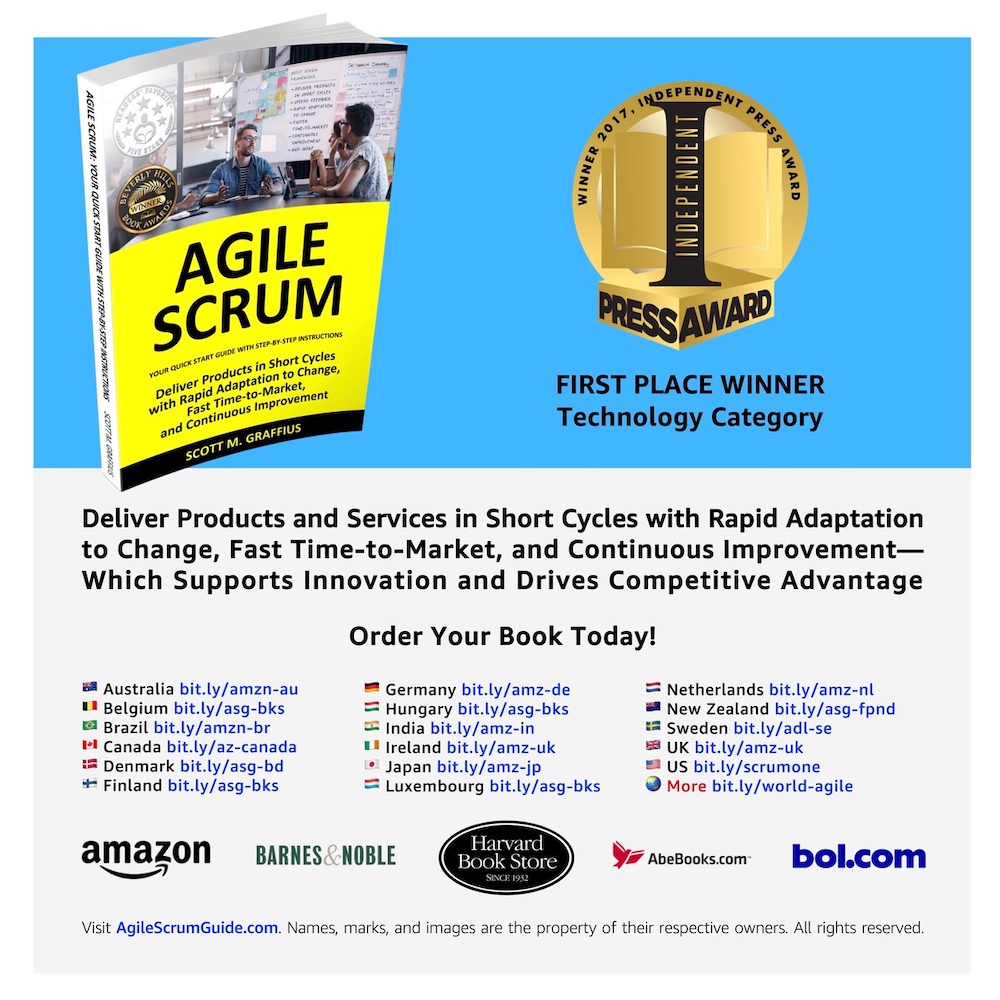
Shifting customer needs are common in today's marketplace. Businesses must be adaptive and responsive to change while delivering an exceptional customer experience to be competitive.
There are a variety of frameworks supporting the development of products and services, and most approaches fall into one of two broad categories: traditional or agile. Traditional practices such as waterfall engage sequential development, while agile involves iterative and incremental deliverables. Organizations are increasingly embracing agile to manage projects, and best meet their business needs of rapid response to change, fast delivery speed, and more.
With clear and easy to follow step-by-step instructions, Scott M. Graffius's award-winning Agile Scrum: Your Quick Start Guide with Step-by-Step Instructions helps the reader:
Hailed by Literary Titan as “the book highlights the versatility of Scrum beautifully.”
Winner of 17 first place awards.
Agile Scrum: Your Quick Start Guide with Step-by-Step Instructions is available in paperback and ebook/Kindle worldwide. Some links by country follow.

About Agile Transformation: A Brief Story of How an Entertainment Company Developed New Capabilities and Unlocked Business Agility to Thrive in an Era of Rapid Change
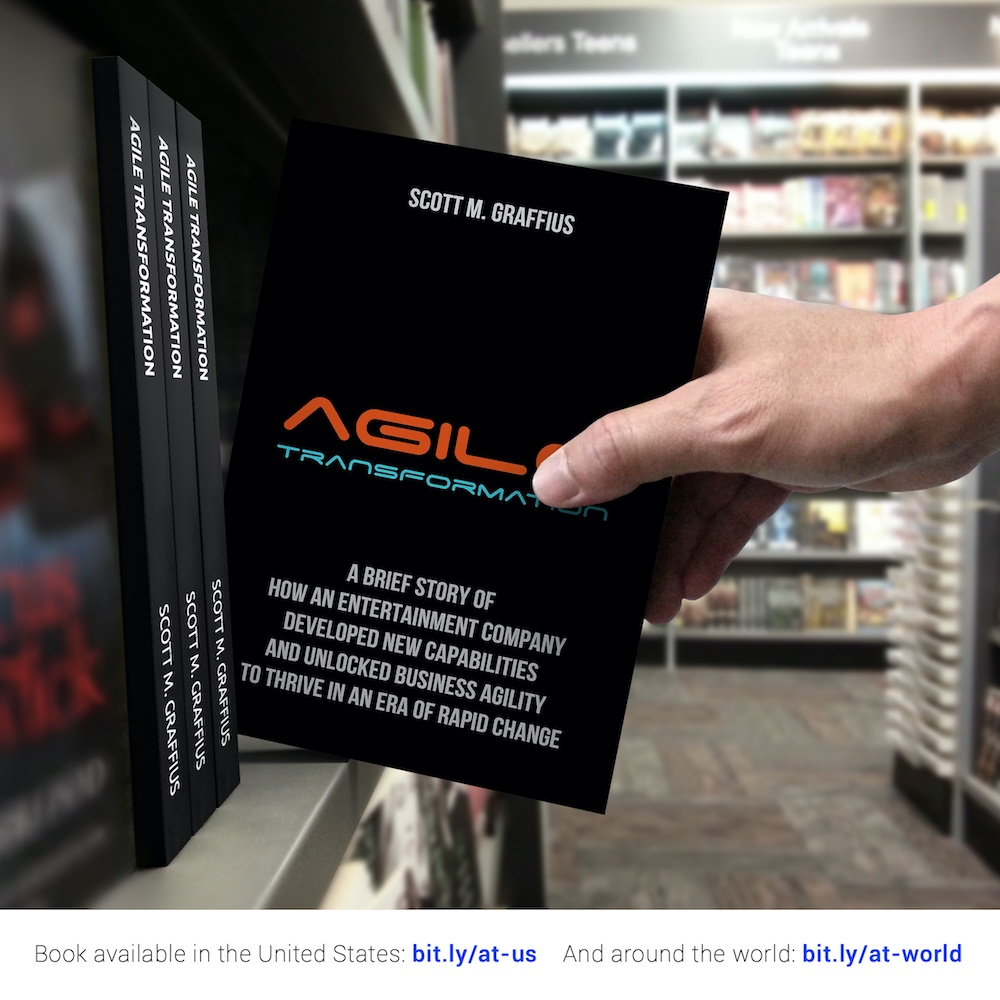
Thriving in today's marketplace frequently depends on making a transformation to become more agile. Those successful in the transition enjoy faster delivery speed and ROI, higher satisfaction, continuous improvement, and additional benefits.
Based on actual events, Agile Transformation: A Brief Story of How an Entertainment Company Developed New Capabilities and Unlocked Business Agility to Thrive in an Era of Rapid Change provides a quick (60-90 minute) read about a successful agile transformation at a multinational entertainment and media company, told from the author's perspective as an agile coach.
The award-winning book by Scott M. Graffius is available in paperback and ebook/Kindle worldwide. Some links by country follow.


Graffius, Scott M. (2025, January 31). Your 2025 Definitive Guide to Top Agile Books. Available at: https://agilescrumguide.com/blog/files/agile-2025.html.


Short Link for Article
The short URL for this article is https://bit.ly/agile-2025


Copyright © Scott M. Graffius
Copyright © Scott M. Graffius. All rights reserved.
Content on this site—including text, images, videos, and data—may not be used for training or input into any artificial intelligence, machine learning, or automatized learning systems, or published, broadcast, rewritten, or redistributed without the express written permission of Scott M. Graffius.



Introduction
In today's fast-paced world, agility rules. Master it, and you'll thrive. This list of the top 10 agile books covers everything from Scrum and Kanban to leadership and innovation. Whether you're an experienced professional or just starting, these books will deepen your understanding, sharpen your skills, and unlock new potential.
Scott M. Graffius—in collaboration with others—curated this list. For that reason and to keep things fair, Graffius’ award-winning Agile Scrum: Your Quick Start Guide with Step-by-Step Instructions is not included.

Top Agile Books
Ready to accelerate your success? Dive into the list, organized alphabetically by title.


Agile Estimating and Planning by Mike Cohn
Agile Estimating and Planning by Mike Cohn is a must-read for agile project management. It advocates relative estimation methods like story points over time-based approaches for greater accuracy and adaptability. Covering velocity tracking, iteration, and release planning, it aligns sprints with business goals while preserving agility. Cohn highlights the team-driven nature of agile estimation, refining it continuously to improve decision-making. This approach enhances planning precision, empowers teams, and drives project success. Transform your agile practices—order your copy today!
Click here to see the price on Amazon
Additional details:
• Kindle (ASIN: B004X1D3TC)
• Paperback (ISBN-13: 978-0131479418)


Agile Project Management: Creating Innovative Products (Second Edition) by Jim Highsmith
Agile Project Management: Creating Innovative Products (Second Edition) by Jim Highsmith offers a strategic, adaptive approach to managing projects in fast-changing environments. It defines agility as a mindset balancing flexibility with discipline, enabling teams to navigate uncertainty while delivering value. Blending agile and traditional methods, it introduces the Agile Project Management (APM) model, emphasizing continuous delivery, customer collaboration, and iterative planning. Highsmith prioritizes leadership over rigid processes, advocating decentralized decision-making and innovation. This book equips professionals with the tools to drive agility at both tactical and organizational levels.
Click here to see the price on Amazon
Additional details:
• Kindle (ASIN: B002HMJYAG)
• Paperback (ISBN-13: 978-0321658395)


Agile Retrospectives: A Practical Guide for Catalyzing Team Learning and Improvement (Second Edition) by Esther Derby, Diana Larsen, and David Horowitz
Agile Retrospectives: A Practical Guide for Catalyzing Team Learning and Improvement (Second Edition) by Esther Derby, Diana Larsen, and David Horowitz provides expert guidance on running effective retrospectives. This updated edition adds 120 pages of new insights, incorporating recent research and real-world experience. Emphasizing psychological safety, it offers practical techniques and strategies, including solutions for remote and hybrid teams. By applying these approaches, teams can drive continuous improvement, boost satisfaction, and deliver greater customer value.
Click here to see the price on Amazon
Additional details:
• Kindle (ASIN: B0D6XFL73D)
• Paperback (ISBN-13: 979-8888650370)


Agile Software Development: Principles, Patterns, and Practices by Robert C. Martin
Agile Software Development: Principles, Patterns, and Practices by Robert C. Martin explores agile methodologies, object-oriented design, and design patterns. It stresses solid design principles for maintainable, scalable software. With detailed discussions and code examples in C++ and Java, Martin demonstrates real-world applications. The book also covers UML and Extreme Programming (XP), offering a comprehensive view of modern development. Agile Software Development is a must-read for those looking to improve their design and coding practices.
Click here to see the price on Amazon
Additional details:
• Hardcover (ISBN-13: 978-0135974445)


Clean Agile: Back to Basics by Robert C. Martin
In Clean Agile: Back to Basics, renowned software engineer Robert C. Martin revisits the foundational principles of agile development—emphasizing the importance of simplicity, communication, and feedback. Martin argues that many organizations have strayed from agile's core values, focusing too heavily on processes and tools rather than individuals and interactions. He advocates for a return to the essence of agile, highlighting essential practices such as test-driven development (TDD), refactoring, and continuous integration to produce high-quality software. This book is a valuable guide for both newcomers and seasoned professionals seeking to realign their development practices with true agile principles.
Click here to see the price on Amazon
Additional details:
• Kindle (ASIN: B07XTL99JQ)
• Audiobook (ASIN: B08X7FWCZM)
• Paperback (ISBN-13: 978-0135781869)


Coaching Agile Teams: A Companion for Scrum Masters, Agile Coaches, and Project Managers in Transition by Lyssa Adkins
Coaching Agile Teams: A Companion for Scrum Masters, Agile Coaches, and Project Managers in Transition by Lyssa Adkins provides essential guidance for scrum masters and agile coaches. It highlights team dynamics, collaboration, and empowerment while navigating agile complexities. Adkins offers practical coaching strategies, urging continuous learning and growth. This book equips readers to build high-performing teams and drive lasting success in agile environments.
Click here to see the price on Amazon
Additional details:
• Kindle (ASIN: B003QP47YG)
• Audiobook (ASIN: B08QTX31HV)
• Paperback (ISBN-13: 978-0321637703)


Drive: The Surprising Truth About What Motivates Us by Daniel H. Pink
In Drive: The Surprising Truth About What Motivates Us, Daniel H. Pink challenges traditional beliefs about motivation, presenting a compelling case for the power of intrinsic motivators over external rewards. Drawing on four decades of scientific research, Pink identifies three core elements that drive human motivation: autonomy, the desire to direct our own lives; mastery, the urge to improve and excel in meaningful tasks; and purpose, the yearning to contribute to something greater than ourselves. He argues that the conventional "carrot-and-stick" approach is often ineffective, especially for tasks requiring creativity and critical thinking, and that fostering an environment that supports these intrinsic drives leads to higher performance and personal satisfaction. This insightful book offers practical guidance for individuals and organizations aiming to harness true motivation. Discover the transformative insights in Drive and unlock your full potential. Over two million copies sold worldwide — order yours today!
Click here to see the price on Amazon
Additional details:
• Kindle (ASIN: B004P1JDJO)
• Audiobook (ASIN: B0032COUMC)
• Hardcover (ISBN-13: 978-1594488849)
• Paperback (ISBN-13: 978-9123682348)


Innovation Project Management: Methods, Case Studies, and Tools for Managing Innovation Projects (Second Edition) by Harold Kerzner
Harold Kerzner's Innovation Project Management: Methods, Case Studies, and Tools for Managing Innovation Projects (Second Edition) provides a powerful roadmap for managing innovation projects with precision and impact. Traditional project management methods often fall short when faced with the uncertainty and fluidity of innovation. This book takes a different approach, offering professionals practical tools, processes, and metrics tailored to address the unique challenges of innovation-driven initiatives. Through case studies from world-class organizations—like IBM, Lego, and Deloitte—the author illustrates how successful companies navigate the complexities of incremental and radical innovation, safeguard intellectual property, and align project management with value creation. In the Agile Innovation section, Kerzner incorporates content from the award-winning Agile Scrum: Your Quick Start Guide with Step-by-Step Instructions by Scott M. Graffius. Get Innovation Project Management for actionable tools, processes, metrics, and insights from world-class organizations to master innovation; and elevate your project management skills today!
Click here to see the price on Amazon
Additional details:
• Kindle (ASIN: B0BN4SQCW5)
• Hardcover (ISBN-13: 978-1119931249)


Lean Software Development: An Agile Toolkit by Mary Poppendieck and Tom Poppendieck
Lean Software Development: An Agile Toolkit by Mary Poppendieck and Tom Poppendieck adapts lean manufacturing principles for software development. It provides a framework to deliver high-quality products faster and more efficiently. The book covers seven core lean principles—eliminating waste, amplifying learning, delaying decisions, delivering quickly, empowering teams, building integrity, and seeing the whole—to streamline development and maximize value. With 22 actionable tools, the book provides strategies for improving collaboration, navigating uncertainty, and driving continuous improvement. Ideal for overcoming inefficiencies and slow delivery, Lean Software Development is a go-to resource for building better, faster, and more adaptable software.
Click here to see the price on Amazon
Additional details:
• Kindle (ASIN: B00HEL13HW)
• Paperback (ISBN-13: 978-0321150783)


User Story Mapping: Discover the Whole Story, Build the Right Product by Jeff Patton
User Story Mapping: Discover the Whole Story, Build the Right Product by Jeff Patton is an essential guide to understanding the user story mapping technique, which helps teams break down complex products into manageable tasks. The book illustrates how this method allows for better communication between stakeholders, improved product discovery, and an overall more effective approach to building software. Patton offers practical advice on creating shared understanding and prioritizing work. User Story Mapping is a must-have for anyone looking to build products that truly meet user needs and deliver successful outcomes.
Click here to see the price on Amazon
Additional details:
• Kindle (ASIN: B00NF07FHS)
• Audiobook (ASIN: B08TZGKKF2)
• Paperback (ISBN-13: 978-1491904909)
• Audio CD (ISBN-13: 979-8212930895)

Conclusion
Agile mastery is a journey, and the right knowledge can make all the difference. Get these books, apply their insights, and take your skills to the next level—because learning and adapting is the best way to thrive.

Read on for:
- About Scott M. Graffius,
- How to Cite This Article,
- and more.

About Scott M. Graffius

Scott M. Graffius is a high impact and globally recognized AI, advanced technology, agile, and project management researcher, thought leader, author, and public speaker.
Graffius has generated more than USD $1.9 billion in business value for organizations served, including Fortune 500 companies. Businesses and industries range from technology (including R&D and AI) to entertainment, financial services, and healthcare, government, social media, and more.
Graffius leads the professional services firm Exceptional PPM and PMO Solutions, along with its subsidiary Exceptional Agility. These consultancies offer strategic and tactical advisory, training, embedded talent, and consulting services to public, private, and government sectors. They help organizations enhance their capabilities and results in agile, project management, program management, portfolio management, and PMO leadership, supporting innovation and driving competitive advantage. The consultancies confidently back services with a Delighted Client Guarantee™. Graffius is a former vice president of project management with a publicly traded provider of diverse consumer products and services over the Internet. Before that, he ran and supervised the delivery of projects and programs in public and private organizations with businesses ranging from e-commerce to advanced technology products and services, retail, manufacturing, entertainment, and more. He has experience with consumer, business, reseller, government, and international markets.
He is the author of two award-winning books.
- His first book, Agile Scrum: Your Quick Start Guide with Step-by-Step Instructions (ISBN-13: 9781533370242), received 17 awards.
- His second book is Agile Transformation: A Brief Story of How an Entertainment Company Developed New Capabilities and Unlocked Business Agility to Thrive in an Era of Rapid Change (ISBN-13: 9781072447962). BookAuthority named it one of the best Scrum books of all time.
Organizations around the world invite Graffius to speak on tech (including AI), agile, project management, program management, portfolio management, and PMO leadership. He has developed and delivered unique and compelling talks and workshops. To date, Graffius has delivered 91 sessions across 25 countries. Select examples of events include Agile Trends Gov, BSides (Newcastle Upon Tyne), Conf42 Quantum Computing, DevDays Europe, DevOps Institute, DevOpsDays (Geneva), Frug’Agile, IEEE, Microsoft, Scottish Summit, Scrum Alliance RSG (Nepal), Techstars, and W Love Games International Video Game Development Conference (Helsinki), and more. With an average rating of 4.81 (on a scale of 1-5), sessions are highly valued.
For booking inquiries, complete the speaker engagement request form or email directly to explore how Graffius can help elevate your organization’s performance.
Prominent businesses, professional associations, government agencies, and universities have featured Graffius and his work including content from his books, talks, workshops, and more. Select examples include:
- Adobe,
- American Management Association,
- Amsterdam Public Health Research Institute,
- Bayer,
- BMC Software,
- Boston University,
- Broadcom,
- Cisco,
- Coburg University of Applied Sciences and Arts Germany,
- Computer Weekly,
- Constructor University Germany,
- Data Governance Success,
- Deimos Aerospace,
- DevOps Institute,
- EU's European Commission,
- Ford Motor Company,
- GoDaddy,
- Harvard Medical School,
- Hasso Plattner Institute Germany,
- IEEE,
- Innovation Project Management,
- Johns Hopkins University,
- Journal of Neurosurgery,
- Lam Research (Semiconductors),
- Leadership Worthy,
- Life Sciences Trainers and Educators Network,
- London South Bank University,
- Microsoft,
- NASSCOM,
- National Academy of Sciences,
- New Zealand Government,
- Oracle,
- Pinterest Inc.,
- Project Management Institute,
- Mary Raum (Professor of National Security Affairs, United States Naval War College),
- SANS Institute,
- SBG Neumark Germany,
- Singapore Institute of Technology,
- Torrens University Australia,
- TBS Switzerland,
- Tufts University,
- UC San Diego,
- UK Sports Institute,
- University of Galway Ireland,
- US Department of Energy,
- US National Park Service,
- US Tennis Association,
- Veleučilište u Rijeci Croatia,
- Verizon,
- Virginia Tech,
- Warsaw University of Technology,
- Wrike,
- Yale University,
- and many others.
Graffius has been actively involved with the Project Management Institute (PMI) in the development of professional standards. He was a member of the team which produced the Practice Standard for Work Breakdown Structures—Second Edition. Graffius was a contributor and reviewer of A Guide to the Project Management Body of Knowledge—Sixth Edition, The Standard for Program Management—Fourth Edition, and The Practice Standard for Project Estimating—Second Edition. He was also a subject matter expert reviewer of content for the PMI’s Congress. Beyond the PMI, Graffius also served as a member of the review team for two of the Scrum Alliance’s Global Scrum Gatherings.
Graffius has a bachelor’s degree in psychology with a focus in Human Factors. He holds nine professional certifications:
- Certified SAFe 6 Agilist (SA),
- Certified Scrum Professional - ScrumMaster (CSP-SM),
- Certified Scrum Professional - Product Owner (CSP-PO),
- Certified ScrumMaster (CSM),
- Certified Scrum Product Owner (CSPO),
- Project Management Professional (PMP),
- Lean Six Sigma Green Belt (LSSGB), and
- IT Service Management Foundation (ITIL).
He is an active member of the Scrum Alliance, the Project Management Institute (PMI), and the Institute of Electrical and Electronics Engineers (IEEE).
He divides his time between Los Angeles and Paris, France.


About Agile Scrum: Your Quick Start Guide with Step-by-Step Instructions

Shifting customer needs are common in today's marketplace. Businesses must be adaptive and responsive to change while delivering an exceptional customer experience to be competitive.
There are a variety of frameworks supporting the development of products and services, and most approaches fall into one of two broad categories: traditional or agile. Traditional practices such as waterfall engage sequential development, while agile involves iterative and incremental deliverables. Organizations are increasingly embracing agile to manage projects, and best meet their business needs of rapid response to change, fast delivery speed, and more.
With clear and easy to follow step-by-step instructions, Scott M. Graffius's award-winning Agile Scrum: Your Quick Start Guide with Step-by-Step Instructions helps the reader:
- Implement and use the most popular agile framework―Scrum;
- Deliver products in short cycles with rapid adaptation to change, fast time-to-market, and continuous improvement; and
- Support innovation and drive competitive advantage.
Hailed by Literary Titan as “the book highlights the versatility of Scrum beautifully.”
Winner of 17 first place awards.
Agile Scrum: Your Quick Start Guide with Step-by-Step Instructions is available in paperback and ebook/Kindle worldwide. Some links by country follow.
- 🇦🇺 Australia
- 🇦🇹 Austria
- 🇧🇪 Belgium
- 🇧🇷 Brazil
- 🇨🇦 Canada
- 🇨🇿 Czech Republic
- 🇩🇰 Denmark
- 🇫🇮 Finland
- 🇫🇷 France
- 🇩🇪 Germany
- 🇬🇷 Greece
- 🇭🇺 Hungary
- 🇮🇳 India
- 🇮🇪 Ireland
- 🇮🇱 Israel
- 🇮🇹 Italy
- 🇯🇵 Japan
- 🇱🇺 Luxembourg
- 🇲🇽 Mexico
- 🇳🇱 Netherlands
- 🇳🇿 New Zealand
- 🇳🇴 Norway
- 🇪🇸 Spain
- 🇸🇪 Sweden
- 🇨🇭 Switzerland
- 🇦🇪 UAE
- 🇬🇧 United Kingdom
- 🇺🇸 United States
- 🌏 More countries

About Agile Transformation: A Brief Story of How an Entertainment Company Developed New Capabilities and Unlocked Business Agility to Thrive in an Era of Rapid Change

Thriving in today's marketplace frequently depends on making a transformation to become more agile. Those successful in the transition enjoy faster delivery speed and ROI, higher satisfaction, continuous improvement, and additional benefits.
Based on actual events, Agile Transformation: A Brief Story of How an Entertainment Company Developed New Capabilities and Unlocked Business Agility to Thrive in an Era of Rapid Change provides a quick (60-90 minute) read about a successful agile transformation at a multinational entertainment and media company, told from the author's perspective as an agile coach.
The award-winning book by Scott M. Graffius is available in paperback and ebook/Kindle worldwide. Some links by country follow.
- 🇦🇺 Australia
- 🇦🇹 Austria
- 🇧🇷 Brazil
- 🇨🇦 Canada
- 🇨🇿 Czech Republic
- 🇩🇰 Denmark
- 🇫🇮 Finland
- 🇫🇷 France
- 🇩🇪 Germany
- 🇬🇷 Greece
- 🇮🇳 India
- 🇮🇪 Ireland
- 🇯🇵 Japan
- 🇱🇺 Luxembourg
- 🇲🇽 Mexico
- 🇳🇱 Netherlands
- 🇳🇿 New Zealand
- 🇪🇸 Spain
- 🇸🇪 Sweden
- 🇨🇭 Switzerland
- 🇦🇪 United Arab Emirates
- 🇬🇧 United Kingdom
- 🇺🇸 United States
- 🌏 More countries


Graffius, Scott M. (2025, January 31). Your 2025 Definitive Guide to Top Agile Books. Available at: https://agilescrumguide.com/blog/files/agile-2025.html.


Short Link for Article
The short URL for this article is https://bit.ly/agile-2025


Copyright © Scott M. Graffius
Copyright © Scott M. Graffius. All rights reserved.
Content on this site—including text, images, videos, and data—may not be used for training or input into any artificial intelligence, machine learning, or automatized learning systems, or published, broadcast, rewritten, or redistributed without the express written permission of Scott M. Graffius.

"Top Agile Certifications: 2023 Report" by AgileScrumGuide.com
15 April 2023
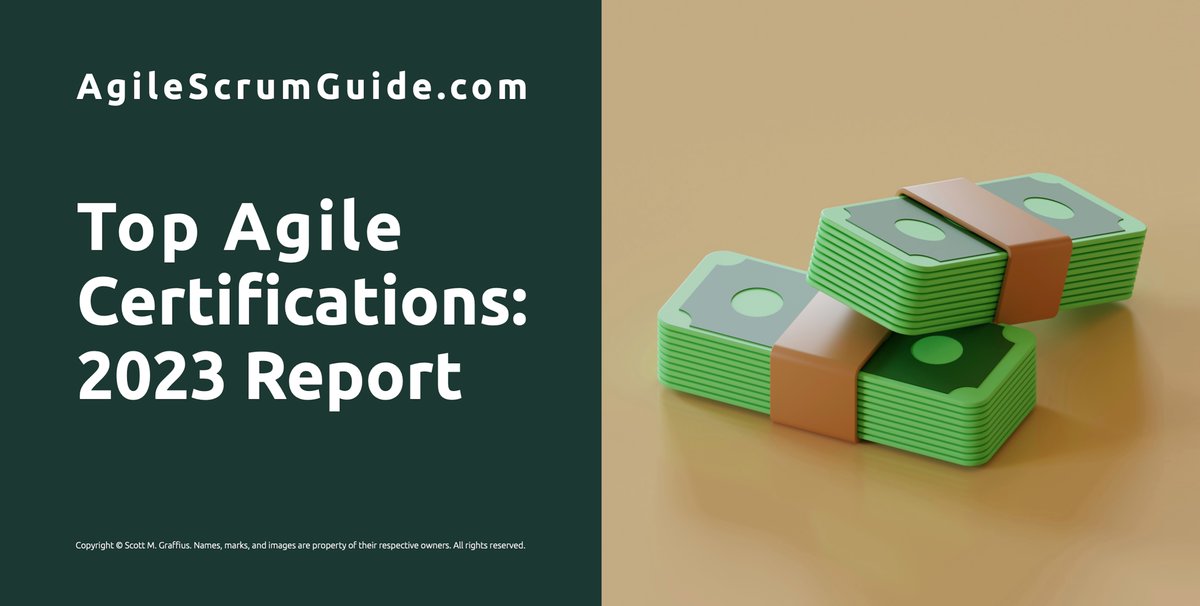

Agile Workflows

Introduction
There's no substitute for experience. However, certifications can be a valuable tool for propelling one's career. Employers want candidates and employees with up-to-date knowledge and skills, and certifications demonstrate a person’s mastery of the respective subject. This article takes a look at Agile related certifications.
Top Agile Certifications
We compiled and analyzed data from multiple sources — including CIO¹, Forbes², Indeed³, Monday.com⁴, LogicMonitor⁵, BMC⁶, and LeanWisdom⁷ — to determine the general consensus on the top Agile certifications. Seven emerged. Here they are:
- Certified ScrumMaster (CSM)
- Certified Scrum Product Owner (CSPO)
- Certified SAFe Agilist (SA)
- Certified SAFe Product Owner and Product Manager (SAFe POPM)
- PMI Agile Certified Practitioner (PMI-ACP)
- Certified Professional Scrum Master (PSM 1)
- Certified Professional Scrum Product Owner (PSPO 1)
Details follow. Note: Prerequisites, costs, and other data are subject to change by the governing organizations.
Profile of Each Certification

Certified ScrumMaster (CSM)
- Certification: Certified ScrumMaster
- Abbreviation for certification: CSM
- Governing organization – name: Scrum Alliance
- Governing organization – website: https://www.scrumalliance.org
- Short description of certification: Validates a solid understanding of Scrum including practical ways to apply it on one’s team and organization
- Exam – prerequisites: Completion of a two-day course by an authorized trainer
- Exam – cost: Course (referenced above) includes the cost of the exam. Cost ranges from about $500 to $1,200 depending on the location, delivery format (in-person or online), provider, and other factors
- Exam – delivery: Online
- Exam – number of questions: 50
- Exam – time to complete: 1 hour
- Exam – pass rate (minimum % that must be correct to pass exam): 74%
- Credential expiration: 2 years
- Credential renewal – required continuing education units (CEUs) or professional development units (PDUs) or Scrum educational units (SEUs): 20 SEUs
- Credential renewal – cost: $100

Certified Scrum Product Owner (CSPO)
- Certification: Certified Scrum Product Owner
- Abbreviation for certification: CSPO
- Governing organization – name: Scrum Alliance
- Governing organization – website: https://www.scrumalliance.org
- Short description of certification: Demonstrates a deep understanding of Scrum principles and practices, as well as the role and responsibilities of a Product Owner in the Scrum framework
- Exam – prerequisites: Certification is awarded after the successful completion of the required two-day course delivered by an authorized trainer (there is not a separate exam)
- Exam – cost: Certification is awarded after the successful completion of the required two-day course delivered by an authorized trainer (there is not a separate exam); course cost ranges from about $500 to $1,200 depending on the location, delivery format (in-person or online), provider, and other factors
- Exam – delivery: Certification is awarded after the successful completion of the required two-day course delivered by an authorized trainer (there is not a separate exam)
- Exam – number of questions: Certification is awarded after the successful completion of the required two-day course delivered by an authorized trainer (there is not a separate exam)
- Exam – time to complete: Certification is awarded after the successful completion of the required two-day course delivered by an authorized trainer (there is not a separate exam)
- Exam – pass rate (minimum % that must be correct to pass exam): Certification is awarded after the successful completion of the required two-day course delivered by an authorized trainer (there is not a separate exam)
- Credential expiration: 2 years
- Credential renewal – required continuing education units (CEUs) or professional development units (PDUs) or Scrum educational units (SEUs): 20 SEUs
- Credential renewal – cost: $100

Certified SAFe Agilist (SA)
- Certification: Certified SAFe Agilist
- Abbreviation for certification: SA
- Governing organization – name: Scaled Agile
- Governing organization – website: https://scaledagile.com
- Short description of certification: Demonstrates knowledge of how to: establish Team and Technical Agility and organize around the flow of value; align organizations around clear, common objectives; participate successfully in SAFe events; and adopt a customer-centric mindset
- Exam – prerequisites: Completion of a two-day course by an authorized trainer
- Exam – cost: Course (referenced above) includes the cost of the exam. Cost ranges from about $500 to $1,200 depending on the location, delivery format (in-person or online), provider, and other factors
- Exam – delivery: Online
- Exam – number of questions: 45
- Exam – time to complete: 1.5 hours
- Exam – pass rate (minimum % that must be correct to pass exam): 80%
- Credential expiration: 1 year
- Credential renewal – required continuing education units (CEUs) or professional development units (PDUs) or Scrum educational units (SEUs): 10 PDUs
- Credential renewal – cost: $100

Certified SAFe Product Owner and Product Manager (SAFe POPM)
- Certification: Certified SAFe Product Owner and Product Manager
- Abbreviation for certification: SAFe POPM
- Governing organization – name: Scaled Agile
- Governing organization – website: https://scaledagile.com
- Short description of certification: Demonstrates knowledge of how to: perform the role of a Product Owner (PO) and a Product Manager (PM); put the customer at the center of the design, build, and test process; prepare for and lead Program Increment (PI) Planning; decompose Epics to Features, and Features to Stories; and collaborate with Agile teams to forecast work
- Exam – prerequisites: Completion of a two-day course by an authorized trainer
- Exam – cost: Course (referenced above) includes the cost of the exam. Cost ranges from about $500 to $1,200 depending on the location, delivery format (in-person or online), provider, and other factors
- Exam – delivery: Online
- Exam – number of questions: 45
- Exam – time to complete: 1.5 hours
- Exam – pass rate (minimum % that must be correct to pass exam): 80%
- Credential expiration: 1 year
- Credential renewal – required continuing education units (CEUs) or professional development units (PDUs) or Scrum educational units (SEUs): 10 PDUs
- Credential renewal – cost: $100

PMI Agile Certified Practitioner (PMI-ACP)
- Certification: PMI Agile Certified Practitioner
- Abbreviation for certification: PMI-ACP
- Governing organization – name: Project Management Institute (PMI)
- Governing organization – website: https://www.pmi.org
- Short description of certification: Demonstrates knowledge of the PMI's standardization of Agile across multiple methodologies (such as Scrum, Kanban, Lean)
- Exam – prerequisites: 2,000 hours of project management experience; 1,500 hours of Agile experience; and 21 hours of training in Agile
- Exam – cost: $435 for members of the PMI, $495 for those not a member of the PMI
- Exam – delivery: In-person in an assessment center
- Exam – number of questions: 120
- Exam – time to complete: 3 hours
- Exam – pass rate (minimum % that must be correct to pass exam): Passing score is not disclosed (it is estimated to be 80%)
- Credential expiration: 3 years
- Credential renewal – required continuing education units (CEUs) or professional development units (PDUs) or Scrum educational units (SEUs): 30 PDUs
- Credential renewal – cost: $60 for PMI members, $150 for those not members of the PMI

Certified Professional Scrum Master (PSM 1)
- Certification: Certified Professional Scrum Master
- Abbreviation for certification: PSM 1
- Governing organization – name: Scrum.org
- Governing organization – website: https://www.scrum.org
- Short description of certification: Validates knowledge of the Scrum framework, the Scrum Master accountabilities, and how to apply Scrum
- Exam – prerequisites: A course is recommended but not required
- Exam – cost: $150
- Exam – delivery: Online
- Exam – number of questions: 80
- Exam – time to complete: 1 hour
- Exam – pass rate (minimum % that must be correct to pass exam): 85%
- Credential expiration: Certification does not expire
- Credential renewal – required continuing education units (CEUs) or professional development units (PDUs) or Scrum educational units (SEUs): Not applicable
- Credential renewal – cost: Not applicable as certification does not expire

Certified Professional Scrum Product Owner (PSPO 1)
- Certification: Certified Professional Scrum Product Owner
- Abbreviation for certification: PSPO 1
- Governing organization – name: Scrum.org
- Governing organization – website: https://www.scrum.org
- Short description of certification: Validates knowledge of the Scrum framework and one’s ability to support and enable value creation and delivery
- Exam – prerequisites: A course is recommended but not required
- Exam – cost: $200
- Exam – delivery: Online
- Exam – number of questions: 80
- Exam – time to complete: 1 hour
- Exam – pass rate (minimum % that must be correct to pass exam): 85%
- Credential expiration: Certification does not expire
- Credential renewal – required continuing education units (CEUs) or professional development units (PDUs) or Scrum educational units (SEUs): Not applicable
- Credential renewal – cost: Not applicable as certification does not expire
Conclusion
Certifications can provide significant value for professionals looking to enhance their skills and credibility in the marketplace. Employers often prefer to hire certified professionals, and those who invest in professional credentials typically enjoy larger salaries. Informed by data from multiple sources, this article identified and profiled the top Agile certifications: Certified ScrumMaster (CSM), Certified Scrum Product Owner (CSPO), Certified SAFe Agilist (SA), Certified SAFe Product Owner and Product Manager (SAFe POPM), PMI Agile Certified Practitioner (PMI-ACP), Certified Professional Scrum Master (PSM 1), and Certified Professional Scrum Product Owner (PSPO 1). Those interested in securing one or more Agile certifications can leverage the information presented in this article to assist in their decision-making.

Select References/Sources:
- CIO (2022, October 4). Top 16 Agile Certifications Available Today. Available at: https://www.cio.com/article/230223/7-agile-certifications-to-take-your-career-to-the-next-level.html.
- Forbes (2023, March 22). Five Agile Certifications for Project Management Professionals. Available at: https://www.forbes.com/advisor/business/best-agile-certifications.
- Indeed (2022, December 12). Twelve Valuable Agile Certifications to Advance Your Career. Available at: https://www.indeed.com/career-advice/career-development/agile-certifications.
- Monday.com (2023, March 26). Agile Project Management Certification: A Complete Guide. Available at: https://monday.com/blog/project-management/agile-project-management-certification.
- LogicMonitor (2022, June 5). Best Agile Certifications for IT Professionals in 2022. Available at: https://www.logicmonitor.com/blog/best-agile-certifications-for-it-professionals-in-2022.
- BMC (2020, August 17). Top Agile Certifications. Available at: https://www.bmc.com/blogs/agile-certifications.
- LeanWisdom (2022, September 9). The List of Best Agile Certifications in 2022. Available at: https://www.leanwisdom.com/blog/the-list-of-best-agile-certification.

How to Cite this Article:
Graffius, Scott M. (2023, April 15). Top Agile Certifications: 2023 Report. Available at: https://AgileScrumGuide.com.


About Scott M. Graffius

Scott M. Graffius, PMP, SA, CSP-SM, CSP-PO, CSM, CSPO, SFE, ITIL, LSSGB is an agile project management practitioner, consultant, multi-award-winning author, and international keynote speaker. He is the Founder of Exceptional PPM and PMO Solutions™ and subsidiary Exceptional Agility™. He has generated over $1.9 billion of business value in aggregate for Global Fortune 500 businesses and other organizations he has served. Graffius and content from his books (Agile Scrum: Your Quick Start Guide with Step-by-Step Instructions and Agile Transformation: A Brief Story of How an Entertainment Company Developed New Capabilities and Unlocked Business Agility to Thrive in an Era of Rapid Change), talks, workshops, and more have been featured and used by businesses, professional associations, governments, and universities. Examples include Microsoft, Oracle, Broadcom, Cisco, Gartner, Project Management Institute, IEEE, Qantas, National Academy of Sciences, United States Department of Energy, New Zealand Ministry of Education, Yale University, Tufts University, and others. He has delighted audiences with dynamic and engaging talks and workshops on agile, project management, and technology leadership at 84 conferences and other events across 25 countries. Visit https://ScottGraffius.com to learn more.
Connect with Scott on:
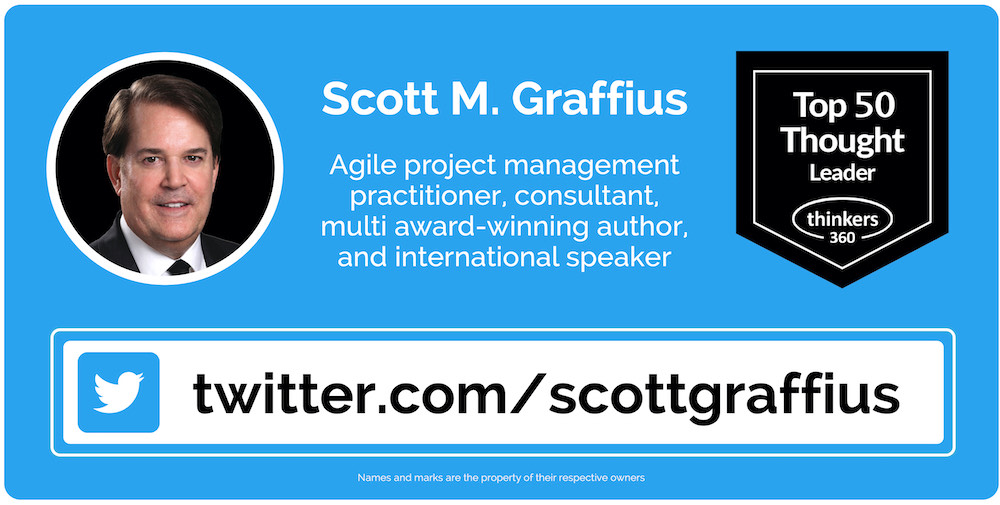

About Agile Scrum: Your Quick Start Guide with Step-by-Step Instructions
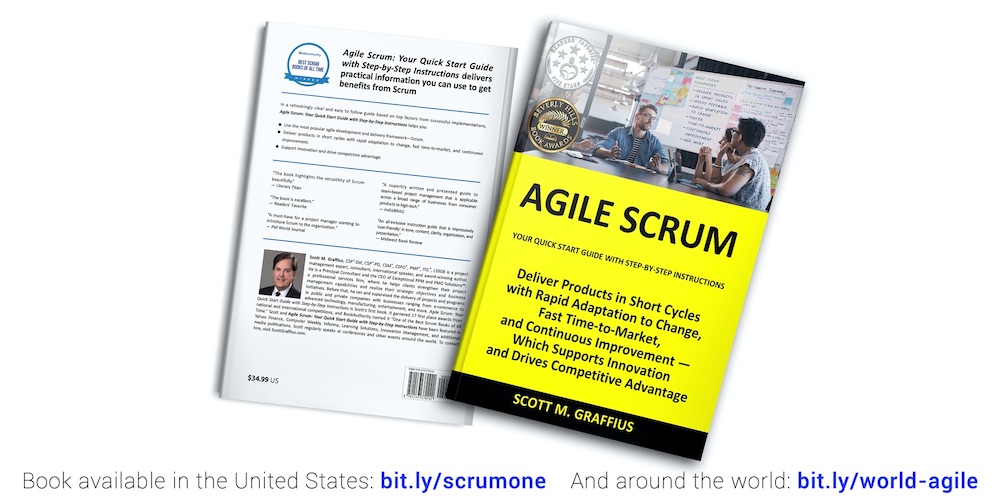
Shifting customer needs are common in today's marketplace. Businesses must be adaptive and responsive to change while delivering an exceptional customer experience to be competitive.
There are a variety of frameworks supporting the development of products and services, and most approaches fall into one of two broad categories: traditional or agile. Traditional practices such as waterfall engage sequential development, while agile involves iterative and incremental deliverables. Organizations are increasingly embracing agile to manage projects, and best meet their business needs of rapid response to change, fast delivery speed, and more.
With clear and easy to follow step-by-step instructions, Scott M. Graffius's award-winning Agile Scrum: Your Quick Start Guide with Step-by-Step Instructions helps the reader:
- Implement and use the most popular agile framework―Scrum;
- Deliver products in short cycles with rapid adaptation to change, fast time-to-market, and continuous improvement; and
- Support innovation and drive competitive advantage.
Hailed by Literary Titan as “the book highlights the versatility of Scrum beautifully.”
Winner of 17 first place awards.
Agile Scrum: Your Quick Start Guide with Step-by-Step Instructions is available in paperback and ebook/Kindle worldwide. Some links by country follow.
- 🇦🇺 Australia
- 🇦🇹 Austria
- 🇧🇪 Belgium
- 🇧🇷 Brazil
- 🇨🇦 Canada
- 🇨🇿 Czech Republic
- 🇩🇰 Denmark
- 🇫🇮 Finland
- 🇫🇷 France
- 🇩🇪 Germany
- 🇬🇷 Greece
- 🇭🇺 Hungary
- 🇮🇳 India
- 🇮🇪 Ireland
- 🇮🇱 Israel
- 🇮🇹 Italy
- 🇯🇵 Japan
- 🇱🇺 Luxembourg
- 🇲🇽 Mexico
- 🇳🇱 Netherlands
- 🇳🇿 New Zealand
- 🇳🇴 Norway
- 🇪🇸 Spain
- 🇸🇪 Sweden
- 🇨🇭 Switzerland
- 🇦🇪 UAE
- 🇬🇧 United Kingdom
- 🇺🇸 United States
- 🌏 More countries

About Agile Transformation: A Brief Story of How an Entertainment Company Developed New Capabilities and Unlocked Business Agility to Thrive in an Era of Rapid Change

Thriving in today's marketplace frequently depends on making a transformation to become more agile. Those successful in the transition enjoy faster delivery speed and ROI, higher satisfaction, continuous improvement, and additional benefits.
Based on actual events, Agile Transformation: A Brief Story of How an Entertainment Company Developed New Capabilities and Unlocked Business Agility to Thrive in an Era of Rapid Change provides a quick (60-90 minute) read about a successful agile transformation at a multinational entertainment and media company, told from the author's perspective as an agile coach.
The award-winning book by Scott M. Graffius is available in paperback and ebook/Kindle worldwide. Some links by country follow.
- 🇦🇺 Australia
- 🇦🇹 Austria
- 🇧🇷 Brazil
- 🇨🇦 Canada
- 🇨🇿 Czech Republic
- 🇩🇰 Denmark
- 🇫🇮 Finland
- 🇫🇷 France
- 🇩🇪 Germany
- 🇬🇷 Greece
- 🇮🇳 India
- 🇮🇪 Ireland
- 🇯🇵 Japan
- 🇱🇺 Luxembourg
- 🇲🇽 Mexico
- 🇳🇱 Netherlands
- 🇳🇿 New Zealand
- 🇪🇸 Spain
- 🇸🇪 Sweden
- 🇨🇭 Switzerland
- 🇦🇪 United Arab Emirates
- 🇬🇧 United Kingdom
- 🇺🇸 United States
- 🌏 More countries

Let's Connect

Connect with AgileScrumGuide.com on:

This article was originally published at https://ExceptionalAgility.com.
The short link for this article is: https://bit.ly/top-certs
© Copyright 2023 Scott M. Graffius, AgileScrumGuide.com. All rights reserved. This material may not be published, broadcast, rewritten or redistributed without the express written permission of Scott M. Graffius/AgileScrumGuide.com.

Incorporate Minimum Viable Products (MVPs) in the Product Development Process to Improve the Probability of Launching Solutions that Meet Customers’ Needs and Succeed in the Marketplace
15 May 2023


Agile Workflows

Minimum viable products (MVPs)—coined by Frank Robinson in 2001, and subsequently popularized by Steve Blank and Eric Ries—can be advantageous tools for the development of products and services. This article is informed by Agile Scrum: Your Quick Start Guide with Step-by-Step Instructions author Scott M. Graffius' first-hand experience with MVPs as well as research and coverage from the Harvard Business Review, IEEE, MIT Sloan Management Review, Product Development and Management Association, Product School, Project Management Institute, Scaled Agile, and others (all listed in the bibliography section of this article). This article was first published at https://scottgraffius.com with the title "Leverage the Power of the Minimum Viable Product (MVP)."
Introduction

Minimum Viable Products (MVPs) can be game changers. They can be used by businesses to validate ideas, reduce time to market, and minimize risks associated with building fully featured products from the outset. This article provides those involved or interested in Agile, Lean, Product Management, Product Development, Project Management, and entrepreneurship with information on the significance of MVPs and how to leverage them.

Defining MVPs
First, it's paramount to understand what constitutes an MVP and why it matters. A Minimum Viable Product is a version of a product (or service) that incorporates just the essential features to address core customer needs and validate the viability of the concept. By employing an MVP, companies can gather valuable user feedback early on, allowing them to iterate, refine, and pivot their offering—if needed—based on market demand. This process saves time and resources, and it advances the chances of building a successful and customer-centric offering.
Here's a succinct definition of the Minimum Viable Product (MVP):
"The MVP has just those features considered sufficient for it to be of value to customers and allow for it to be shipped or sold to early adopters. Customer feedback will inform future development of the product." — Scott M. Graffius, Agile Scrum: Your Quick Start Guide with Step-by-Step Instructions
Next, examples of seven successful MVPs—Zappos, Spotify, Airbnb, Facebook, Amazon, Dropbox, and Groupon—will illustrate the power of MVPs.
MVP Success Stories
- Zappos: Zappos revolutionized the online shoe market by focusing on customer-centricity and rapid experimentation. Their MVP allowed them to validate their hypothesis, gather customer feedback, and iterate their offering to create a seamless and personalized shopping experience. Zappos is a prime example of the power of MVPs.
- Spotify: Global music streaming platform Spotify started as a simple streaming service MVP and they and continuously improved and expanded it based on customer feedback. By iterating their product, Spotify became a household name. Their MVP-driven approach ensured a product-market fit and helped them stay ahead in a competitive industry.
- Airbnb: Airbnb's success story speaks to the effectiveness of MVPs in validating an idea and subsequently scaling it to a global marketplace. Airbnb's founders started by testing their marketplace concept using an MVP strategy. By leveraging existing resources and validating demand through early adopters, they gained critical insights that shaped their platform's evolution. Today, Airbnb is a household name, offering unique accommodations worldwide.
- Facebook: Facebook's journey from a simple MVP to the world's largest social network demonstrates the power of incremental growth and user feedback. Mark Zuckerberg and fellow Harvard College students and roommates Eduardo Saverin, Andrew McCollum, Dustin Moskovitz, and Chris Hughes initially created a minimal profile-based social networking MVP (initially called "Thefacebook"), focusing on connecting people at Harvard. Through continuous iterations and the addition of features based on user needs and feedback, Facebook reshaped the social media landscape, connecting billions of people globally.
- Amazon: E-commerce giant Amazon is renowned for its relentless focus on customer experience. They started with an MVP approach, catering to customers' fundamental needs related to books, and subsequently expanded into new product categories incrementally. By prioritizing customer satisfaction, Amazon established itself as a trusted and innovative marketplace, continuously raising the bar for online shopping.
- Dropbox: Dropbox, a prominent player in the cloud storage market, kick-started its journey with a basic file-syncing MVP. By offering a simple yet essential solution to the problem of file synchronization across devices, Dropbox gained traction and valuable user insights. They leveraged this feedback to iterate and improve their product, eventually becoming a leader in the highly competitive cloud storage industry.
- Groupon: Popular online deals platform Groupon employed an MVP approach by testing deal offerings on a WordPress blog. That allowed them to validate market interest and adjust their strategy based on customer responses. By embracing the importance of market validation and adaptability, Groupon transformed into a global leader, providing users with discounted offers across various categories.
Key Principles and Best Practices for MVPs
Building a successful MVP requires adhering to key principles and best practices. It involves thoughtfully determining the relatively few features and limited scope to address core customer needs. Collecting and analyzing user feedback plays a pivotal role in making informed decisions and prioritizing enhancements. By embracing an iterative mindset and focusing on the most valuable aspects of the product, businesses can create an MVP that resonates with their target audience.
Avoiding Common Pitfalls and Challenges with MVPs
While MVPs offer significant advantages, they are not without challenges. Over-engineering the product, prematurely scaling, and failing to validate crucial assumptions are common pitfalls that can hinder success. It’s vital to strike a balance between building a viable product and avoiding unnecessary complexity. By remaining adaptable and open to change, businesses can navigate these challenges and increase the chances of achieving their goals.
Validating and Iterating via Lean and Agile Approaches
The MVP is particularly well-suited for Lean and Agile approaches and environments. Lean principles emphasize continuous learning, eliminating waste, and rapid experimentation. Agile (such as Scrum, Kanban, and SAFe) involve iterative development, frequent feedback loops, and continuous improvement. Utilizing Lean/Agile can help maximize the value of MVPs and increase chances of success.
Beyond the MVP
Once an MVP proves its viability, the focus shifts to scaling and launching the product. This stage requires a broad and deep understanding of the target market, competition, and customer preferences. It involves adapting the product based on user feedback, exploring different marketing strategies, and leveraging data-driven insights. Staying agile, continuously learning, and adapting to market dynamics are crucial for sustained growth and long-term success.

Conclusion
MVPs are powerful tools for innovation and the successful development of products/services. The examples of Zappos, Spotify, Airbnb, Facebook, Amazon, Dropbox, and Groupon highlight the transformative impact of MVPs across diverse industries. By embracing the core principles, avoiding common pitfalls, and leveraging Lean and Agile approaches, businesses can unlock the full potential of their MVPs and pave the way for sustained growth, customer satisfaction, and market leadership with their offerings. Which makes MVPs game changers.

Bibliography
- Airbnb (n.d.). About Airbnb. Available at: https://news.airbnb.com/about-us.
- Blank, Steve (2020). The Startup Owner's Manual: The Step-By-Step Guide for Building a Great Company. Hoboken, New Jersey: John Wiley and Sons.
- Cagan, Marty (2012, March 7). Viable Product vs. Minimal Product. Silicon Valley Product Group (SVPG). Available at: https://www.svpg.com/viable-product-vs-minimal-product.
- CB Insights (2021, August 3). The Top 12 Reasons Startups Fail. CB Insights Research. Available at: https://www.cbinsights.com/research/report/startup-failure-reasons-top.
- Davenport, Thomas H., & Seseri, Rudina (2020, December 15). What is a Minimum Viable AI Product? MIT Sloan Management Review. Available at: https://sloanreview.mit.edu/article/what-is-a-minimum-viable-ai-product.
- Dropbox (n.d.). About the Company. Available at: https://www.dropbox.com/about.
- Furr, Nathan, & Dyer, Jeff (2014). The Innovator's Method: Bringing the Lean Start-up into Your Organization. Boston, Massachusetts: Harvard Business Review Press.
- Graffius, Scott M. (2016). Agile Scrum: Your Quick Start Guide with Step-by-Step Instructions. North Charleston, SC: CreateSpace.
- Graffius, Scott M. (2018, October 4). Agile Scrum Helps Innovators, Disruptors, and Entrepreneurs Develop and Deliver Products at Astounding Speed Which Drives Competitive Advantage [Presentation]. Talk delivered to an audience of startups and others in the entrepreneurial community at the Techstars Startup Week Conference at The Box Theater, Riverside, California, United States. Digital Object Identifier (DOI): 10.13140/RG.2.2.25009.12647. DOI link: https://dx.doi.org/10.13140/RG.2.2.25009.12647.
- Graffius, Scott M. (2021, February 27). Are You Realizing All the Benefits from Agile? [Presentation]. Talk delivered to an audience involved or interested in Technology at the Scottish Summit 2021 Technology Conference based from Glasgow, Scotland, United Kingdom. Digital Object Identifier (DOI): 10.13140/RG.2.2.17273.90728. DOI link: https://dx.doi.org/10.13140/RG.2.2.17273.90728.
- Graffius, Scott M. (2023, May 1). Fueling the Development of Innovative and Life-Changing AI Solutions [Presentation]. Talk delivered to an audience of Technology professionals (including Data Scientists, Machine Learning Engineers, Data Engineers, AI Researchers, Project Managers, Business Analysts, UX Designers, Software Developers, Cloud Architects, Data Privacy and Security Specialists, and others involved or interested in AI) at a private event in Mountain View, California, United States. Digital Object Identifier (DOI): 10.13140/RG.2.2.27956.73601. DOI link: https://dx.doi.org/10.13140/RG.2.2.27956.73601.
- Groupon (2013, July 30). The History of Groupon. Available at: https://www.groupon.com/merchant/working-with-groupon/groupon-news/the-history-of-groupon.
- Harvard Business School (2021). MVP Development. Available at: https://entrepreneurship.hbs.edu/Documents/Session%20Summary/HBSRockMVPDevelopment.pdf.
- Krishnamurthy, Rajeshwari (2021, January 29). Why is Agile Product Development Process So Popular? Product Development & Management Association (PDMA). Available at: https://community.pdma.org/knowledgehub/bok/product-innovation-process/why-is-agile-product-development-process-so-popular.
- Lenarduzzi, Valentina, & Taibi, Davide (2016, August). MVP Explained: A Systematic Mapping Study on the Definitions of Minimal Viable Product. Proceedings from the 2016 42nd Euromicro Conference on Software Engineering and Advanced Applications (SEAA): 112–119.
- Merryweather, Ellen (2023, January 9). Product-Led Growth Strategy for Product Managers. Product School. Available at: https://productschool.com/blog/product-strategy/product-led-growth-strategy.
- Meta (n.d.). About Meta. Available at: https://about.meta.com/company-info.
- Miski, A. (2014). Development of a Mobile Application Using the Lean Startup Methodology. International Journal of Scientific & Engineering Research, 5 (1): 1743-1748.
- Moogk, Dobrila R. (2012, March). Minimum Viable Product and the Importance of Experimentation in Technology Startups. Technology Innovation and Management Review. Available at: https://timreview.ca/article/535.
- Olsen, Dan (2015). The Lean Product Playbook: How to Innovate with Minimum Viable Products and Rapid Customer Feedback. Hoboken, New Jersey: John Wiley and Sons.
- Osterwalder, Alexander, & Pigneur, Yves (2010). Business Model Generation: A Handbook for Visionaries, Game Changers, and Challengers. Hoboken, New Jersey: John Wiley and Sons.
- Project Management Institute (n.d.). Minimum Business Increments (MBIs). Available at: https://www.pmi.org/disciplined-agile/da-flex-toc/minimum-business-increments.
- Putten, Alexander B. van, & MacMillan, Ian (2004, December). Making Real Options Really Work. Harvard Business Review, 82 (12): 134-141, 150.
- Ries, Eric (2011). The Lean Startup: How Today's Entrepreneurs Use Continuous Innovation to Create Radically Successful Businesses. New York, New York: Penguin Random House.
- Scaled Agile (n.d.). Applied Innovation Accounting in SAFe. Available at: https://scaledagileframework.com/guidance-applied-innovation-accounting-in-safe.
- Spotify (n.d.). About Spotify. Available at: https://newsroom.spotify.com/company-info.
- Templeton, Chuck (2014, December 9). 10 Lessons Every Entrepreneur Should Learn. Fortune. Available at: https://fortune.com/2014/12/09/10-lessons-every-entrepreneur-should-learn.
- Thomsen, Dave (2013, December 20). Why Human-Centered Design Matters. Wired. Available at: https://www.wired.com/insights/2013/12/human-centered-design-matters.
- Umbreen, J., Mirza, Muhammad Z., Ahmad, Yasir, & Naseem, Afshan. (2022, December). Assessing the Role of Minimum Viable Products in Digital Startups. Proceedings of the 2022 IEEE International Conference on Industrial Engineering and Engineering Management (IEEM): 1073-1077.
- Wikipedia (n.d.). History of Amazon. Available at: https://en.wikipedia.org/wiki/History_of_Amazon.
- Zappos (n.d.). About Zappos. Available at: https://www.zappos.com/marty/c/about-zappos.


About Scott M. Graffius

Scott M. Graffius, PMP, SA, CSP-SM, CSP-PO, CSM, CSPO, SFE, ITIL, LSSGB is an agile project management practitioner, consultant, multi-award-winning author, and international keynote speaker. He is the Founder of Exceptional PPM and PMO Solutions™ and subsidiary Exceptional Agility™. He has generated over $1.9 billion of business value in aggregate for Global Fortune 500 businesses and other organizations he has served. Graffius and content from his books (Agile Scrum: Your Quick Start Guide with Step-by-Step Instructions and Agile Transformation: A Brief Story of How an Entertainment Company Developed New Capabilities and Unlocked Business Agility to Thrive in an Era of Rapid Change), talks, workshops, and more have been featured and used by businesses, professional associations, governments, and universities. Examples include Microsoft, Oracle, Broadcom, Cisco, Gartner, Project Management Institute, IEEE, Qantas, National Academy of Sciences, United States Department of Energy, New Zealand Ministry of Education, Yale University, Tufts University, and others. He has delighted audiences with dynamic and engaging talks and workshops on agile, project management, and technology leadership at 86 conferences and other events across 25 countries. Visit https://ScottGraffius.com to learn more.
Connect with Scott on:


About Agile Scrum: Your Quick Start Guide with Step-by-Step Instructions

Shifting customer needs are common in today's marketplace. Businesses must be adaptive and responsive to change while delivering an exceptional customer experience to be competitive.
There are a variety of frameworks supporting the development of products and services, and most approaches fall into one of two broad categories: traditional or agile. Traditional practices such as waterfall engage sequential development, while agile involves iterative and incremental deliverables. Organizations are increasingly embracing agile to manage projects, and best meet their business needs of rapid response to change, fast delivery speed, and more.
With clear and easy to follow step-by-step instructions, Scott M. Graffius's award-winning Agile Scrum: Your Quick Start Guide with Step-by-Step Instructions helps the reader:
- Implement and use the most popular agile framework―Scrum;
- Deliver products in short cycles with rapid adaptation to change, fast time-to-market, and continuous improvement; and
- Support innovation and drive competitive advantage.
Hailed by Literary Titan as “the book highlights the versatility of Scrum beautifully.”
Winner of 17 first place awards.
Agile Scrum: Your Quick Start Guide with Step-by-Step Instructions is available in paperback and ebook/Kindle worldwide. Some links by country follow.
- 🇦🇺 Australia
- 🇦🇹 Austria
- 🇧🇪 Belgium
- 🇧🇷 Brazil
- 🇨🇦 Canada
- 🇨🇿 Czech Republic
- 🇩🇰 Denmark
- 🇫🇮 Finland
- 🇫🇷 France
- 🇩🇪 Germany
- 🇬🇷 Greece
- 🇭🇺 Hungary
- 🇮🇳 India
- 🇮🇪 Ireland
- 🇮🇱 Israel
- 🇮🇹 Italy
- 🇯🇵 Japan
- 🇱🇺 Luxembourg
- 🇲🇽 Mexico
- 🇳🇱 Netherlands
- 🇳🇿 New Zealand
- 🇳🇴 Norway
- 🇪🇸 Spain
- 🇸🇪 Sweden
- 🇨🇭 Switzerland
- 🇦🇪 UAE
- 🇬🇧 United Kingdom
- 🇺🇸 United States
- 🌏 More countries

About Agile Transformation: A Brief Story of How an Entertainment Company Developed New Capabilities and Unlocked Business Agility to Thrive in an Era of Rapid Change

Thriving in today's marketplace frequently depends on making a transformation to become more agile. Those successful in the transition enjoy faster delivery speed and ROI, higher satisfaction, continuous improvement, and additional benefits.
Based on actual events, Agile Transformation: A Brief Story of How an Entertainment Company Developed New Capabilities and Unlocked Business Agility to Thrive in an Era of Rapid Change provides a quick (60-90 minute) read about a successful agile transformation at a multinational entertainment and media company, told from the author's perspective as an agile coach.
The award-winning book by Scott M. Graffius is available in paperback and ebook/Kindle worldwide. Some links by country follow.
- 🇦🇺 Australia
- 🇦🇹 Austria
- 🇧🇷 Brazil
- 🇨🇦 Canada
- 🇨🇿 Czech Republic
- 🇩🇰 Denmark
- 🇫🇮 Finland
- 🇫🇷 France
- 🇩🇪 Germany
- 🇬🇷 Greece
- 🇮🇳 India
- 🇮🇪 Ireland
- 🇯🇵 Japan
- 🇱🇺 Luxembourg
- 🇲🇽 Mexico
- 🇳🇱 Netherlands
- 🇳🇿 New Zealand
- 🇪🇸 Spain
- 🇸🇪 Sweden
- 🇨🇭 Switzerland
- 🇦🇪 United Arab Emirates
- 🇬🇧 United Kingdom
- 🇺🇸 United States
- 🌏 More countries

Let's Connect

Connect with AgileScrumGuide.com on:

The short link for this article is: https://bit.ly/mvp-win
© Copyright 2023 Scott M. Graffius, AgileScrumGuide.com. All rights reserved. This material may not be published, broadcast, rewritten or redistributed without the express written permission of Scott M. Graffius/AgileScrumGuide.com.
